
T /2024
- VAFS
DOI: https://doi.org/10.70169/VJFS.971
ISSN: 1859 - 0373
168
1, 2 1 2
1 Vi n Nghiên c u và Phát tri n Lâm nghi p Nhi i
2 Vi n Khoa h c Lâm nghi p Vi t Nam
Khu di tích l ch s p qu n Và, th i, là m ng linh thiêng
vi m t qu n th Lim xanh bao g ng kính t 20 cm tr a qua, ng
kính l t và ph i ch t h vào tháng 9/2023. Nhi u cây trong qu n th Lim xanh b nhi m n m
Ceratocystis fimbriata gây ra b nh ch y nh a và ho ng không phù h p c ng b nh
nng thêm. T l b b nh ch y nh a c a qu n th Lim xanh là 36,4%. Trong t ng s 165 cây Lim xanh t n
Và có 40 cây b ng b i vi c t o các l ng do vi c lát sân g ch và 10 cây b các h
kinh doanh làm l u quây kín g c cây. Nh ng cây b ng có t l b b nh và ch s b nh r t cao, g
ng 42,8 - 100% và 55,5 - 100% so v i nh ng cây không b ng. T k t qu u này cho th y c n
nghiên c u các gi i pháp qu n lý hi u qu gi m thi ng không phù h b o t n qu n th Lim xanh t i
n Và.
T khóa: B nh ch y nh a, Ceratocystis fimbriata n Và, ho ng tiêu c c, Lim xanh
CURRENT STATUS OF SAP EXUDATION DISEASE CAUSED BY Ceratocystis Fimbriata
ON Erythrophleum Fordii TREES AT THE VA TEMPLE, HANOI
Pham Quang Thu1, 2, Duong Tien Duc1, Nguyen Minh Chi2
1 Institute of Tropical Forest Research and Development
2 Vietnamese Academy of Forest Sciences
Va Temple is a national historical and cultural relic site, Son Tay town, Hanoi city, is a sacred religious site with
an Erythrophleum fordii population including 165 trees counted for trees with diameter greater than 20 cm.
Many trees in this population are infected by Ceratocystis fimbriata fungus causing sap exudation disease
(Ceratocystis blight). Last year, 6 large diameter trees were died and cut down in September 2023. However,
many living trees suffer from the disease and human inappropriate activities have made the disease worse. The
disease incidence of the population is 36.4%. The E. fordii population at the Va Temple has 40 trees affected
by the trails, 10 trees affected by the paved courtyards and 10 trees whose bases are surrounded by businesses
tents. The affected trees have very high disease incidence and disease severity, 42.8 - 100% and 55.5 - 100%
respectively compared to unaffected trees. The results of this study show that there is a need for effective
management solutions minimising human inappropriate activities to preserve the E. fordii population at the
Va Temple.
Keywords: Ceratocystis fimbriata, Erythrophleum fordii, human negative activities, Sap exudation disease,
Va Temple

et al.
169
I
.
Erythophloeum fordii
et al., 2018)
i.
(Kolb et al., 1994)
(Costanza
et al., 1992)
(Kolb et al., 1994;
Raffa et al., 2009; Edmonds et al., 2011). Môi
- môi
-
, có
Thiên nhiên Môi
Doanh et al., 2018; Lã Nguyên Khang, 2020).
Linh, 2020)
t
-KL
rên, nguyên
.
,
Ceratocystis fimbriata
(Thu et al., 2024). Ngoài ra, nhi
Lim xanh. Bài này trình b

et al., 2024 4) 4
170
II.
III
dích d
-
0 -
25%
bong tróc,
0
1 %
2
Cây p
% %
3 % %
4 %
k t qu phân c p b b nh tính toán
các ch tiêu sau:
P%
n
P% 100
N
R%
ni
vi
.
M b h c chia ra các c sau:
R% = 0 : Cây
R% < 25% : Cây
: Cây
: Cây
: Cây
3.2
...

et al.
171
dích d
IV
(hình
(hình
(hình
Hình 1. Cây b b nh ch y nh a
A. Thân cây ch y nh a; B. L p v trong b th V b loét, n t
trong vòng 6 -
(hình 2A)
(hình
Ceratocystis fimbriata (Thu
et al., 2024).
Ceratocytis
(Barnes et al., 2023;

et al., 2024 4) 4
172
Wingfield et al., 2023) (Chi et al.,
2019) (Al Adawi et al., 2013). 0 - 70%,
B (Hardiyanto et al., 2021).
Hình 2. Th mang bào t m c trên m u g Lim xanh (A) và trên b y cà r t (B)
T
chi Ceratocystis
C. manginecans
(Thu et al.,
. C. fimbriata
(Thu et al., 2024).
4.2. T
20 cm - < 50 cm, 50 cm - < 60 cm, 60 cm - <
70 cm, 70 cm - < 80 cm, 80 cm - < 90 cm, 90
cm -
P% R%) tính
1.

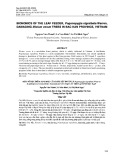
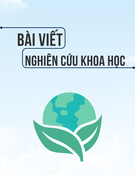
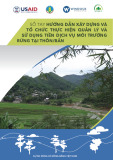
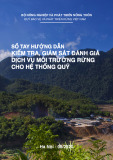
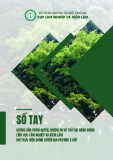
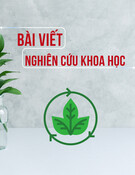
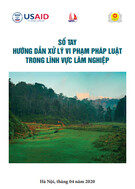
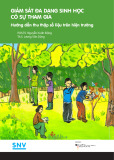



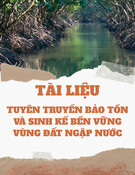
![Hỏi đáp pháp luật lâm nghiệp: Tài liệu [mới nhất/chuẩn nhất]](https://cdn.tailieu.vn/images/document/thumbnail/2025/20250711/vijiraiya/135x160/626_tai-lieu-hoi-dap-ve-phap-luat-lam-nghiep.jpg)



